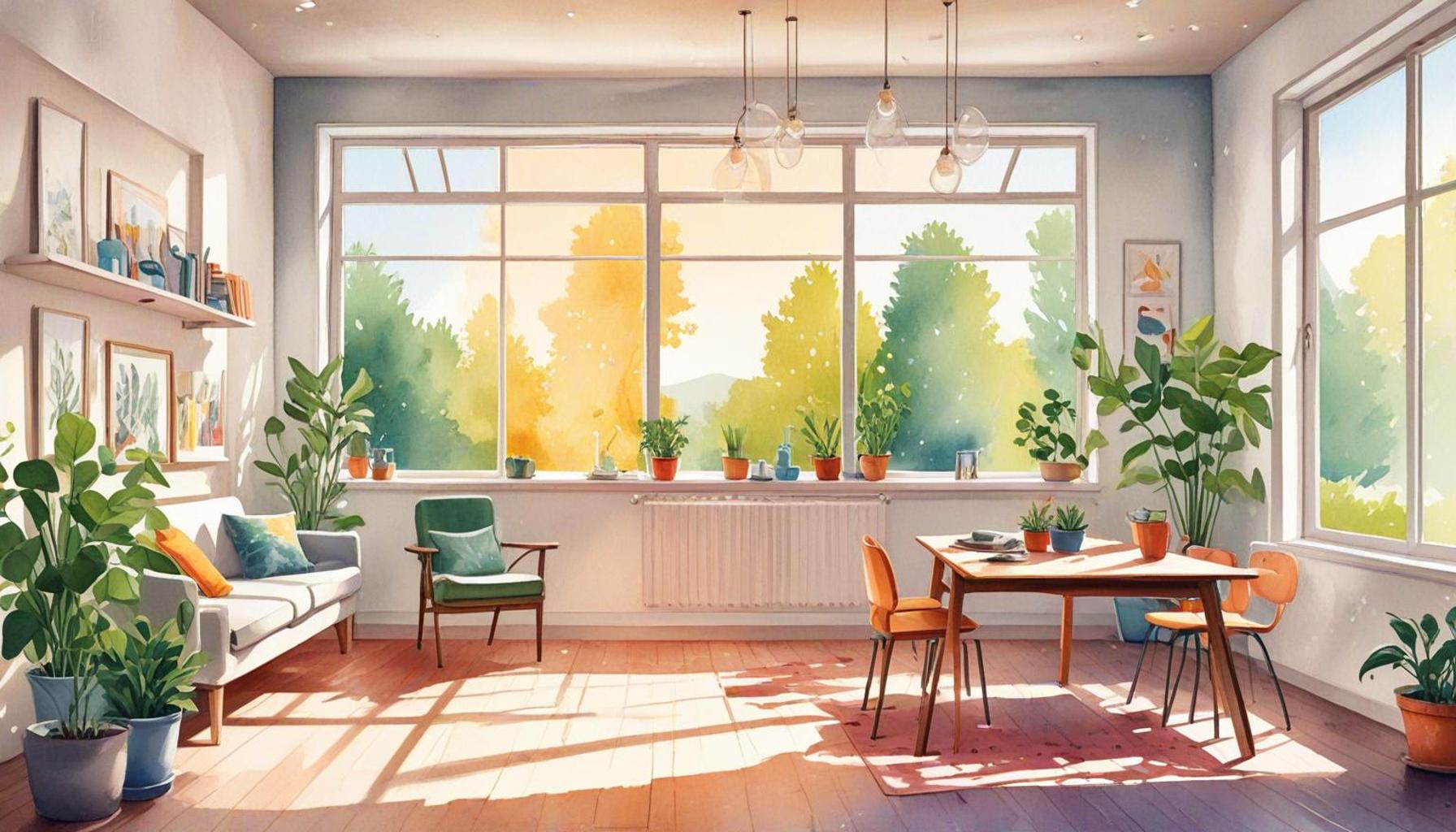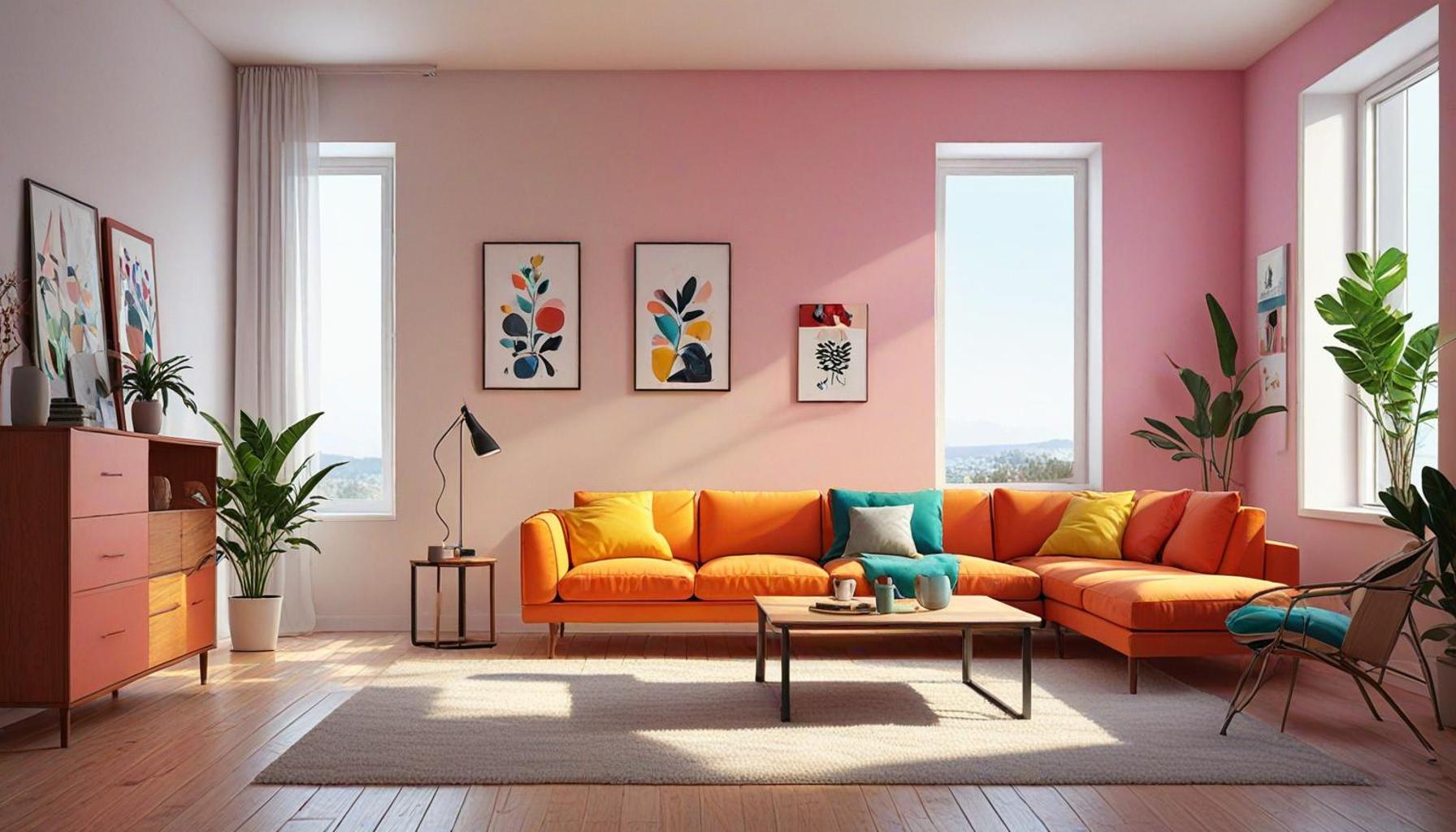Strategies to Maximize Efficiency in Minimalist Homes

Understanding Minimalist Living
As modern life becomes increasingly complex, the allure of minimalism lies in its promise of simplicity and focus. Minimalism is more than a design trend; it represents a philosophy that encourages individuals to evaluate their lives closely and remove the non-essential. This lifestyle not only simplifies one’s living environment but also enhances decision-making processes and overall productivity. By deliberately choosing what to keep, individuals can find mental clarity amid the chaos of daily life, reclaiming time and energy for what truly matters.
Strategies for Maximizing Efficiency
To truly harness the benefits of minimalist living, consider implementing the following effective strategies:
- Prioritize Multi-Functional Furniture: In a minimalist home, choosing furniture that serves multiple purposes can be a game changer. Items like a sofa bed offer flexibility, easily transforming a living space into a guest room. Similarly, a dining table that doubles as a workspace can save space while promoting productivity, especially for those working from home.
- Embrace Organized Storage Solutions: To maintain a tidy environment, using effective storage solutions is crucial. Consider utilizing vertical space with shelves that draw the eye upwards, creating an illusion of higher ceilings while retaining functionality. Hidden compartments in furniture and attractive storage bins can effectively conceal clutter, making it easier to keep spaces organized.
- Curate Your Belongings: Regularly assessing your possessions is a powerful practice in minimalism. By employing the Marie Kondo method of only keeping items that “spark joy,” individuals can foster a more meaningful connection with their belongings. This mindful curation not only helps in decluttering but also encourages a more intentional approach to shopping in the future.
- Implement a Routine: Establishing daily habits can significantly streamline the upkeep of a minimalist home. Setting aside just ten minutes each day for quick tidy-ups or chores can reduce the time spent on deep cleaning, allowing for a more organized living space. Incorporating routines not only fosters cleanliness but also builds a disciplined lifestyle.
The Broader Impact of Minimalism
Minimalism extends beyond aesthetic choices; it’s a mindset that promotes sustainability and environmental consciousness. In a society often driven by consumerism, minimalism encourages individuals to think critically about their consumption patterns, leading to a more eco-friendly lifestyle. By adopting a minimalist approach, one can contribute to reducing waste and minimizing their carbon footprint.
Ultimately, minimalist living is a journey that goes beyond the physical decluttering of space; it invites individuals to reflect on their values and make conscious choices that support a more fulfilling existence. As you delve deeper into minimalism, you may uncover newfound efficiencies not only within your home but in every aspect of your life. The simplicity that minimalism offers might just be the key to unlocking your full potential.
DISCOVER: Click here to uncover more insights
Creating a Functional Living Space
In the pursuit of maximizing efficiency within a minimalist home, creating a functional living space is paramount. The relationship between design and function should redefine how one interacts with their surroundings, ultimately leading to improved productivity and well-being. A well-planned minimalist environment removes distractions, promoting a sense of tranquility and focus. Here are key strategies to consider when aiming to enhance efficiency in your minimalist abode:
- Designate Purposeful Zones: In minimalist homes, each area should serve a specific purpose. Clear definitions between living spaces—like a workspace, relaxation area, and dining zone—encourages mindful use of the environment. By establishing purposeful zones, individuals can focus on tasks more effectively, reducing distractions and increasing overall productivity.
- Prioritize Natural Light: Harnessing natural light can significantly improve energy levels and mood. When designing a minimalist home, strategically placing mirrors or using luminous colors can amplify the presence of natural light. Large windows not only brighten up a space but can also create an inviting atmosphere, which fosters productivity and enhances creativity.
- Incorporate Minimal Technology: While technology is necessary for today’s lifestyle, a minimalist approach urges simplification. Opting for devices that offer multifunctionality can streamline processes. For instance, using an all-in-one printer, scanner, and copier reduces the number of devices occupying space. This fosters an uncluttered aesthetic while serving essential needs.
- Declutter Regularly: A core principle of minimalism is constant evaluation of your belongings. Committing to a regular decluttering schedule—be it monthly or seasonally—ensures that unnecessary items do not accumulate. This practice not only keeps the living space organized but also helps individuals remain mindful of their consumption habits.
Incorporating these strategies can result in a balanced and harmonious environment that promotes efficient living. It encourages residents to focus their energies on activities that truly matter, whether it’s working on a personal project, spending quality time with family, or simply enjoying some peace and quiet. The integration of functionality with simplicity can transform any space into a true sanctuary, making minimalism not just a design choice, but a fulfilling lifestyle.
Enhancing Productivity through Mindfulness
As minimalist living becomes increasingly popular, the emphasis on mindfulness aligns perfectly with enhancing productivity within the home. Mindful practices, such as practicing gratitude and evaluating priorities, can significantly boost efficiency. Minimalism encourages one to focus on quality rather than quantity, be it in relationships or possessions. This shift in mindset can further amplify the ability to work effectively within a simplified space.
| Category 1 | Category 2 |
|---|---|
| Space Optimization | Incorporating multi-functional furniture can significantly increase utility. |
| Environmental Sustainability | Utilizing materials that are both eco-friendly and budget-friendly. |
In minimalist homes, space optimization is key to maximizing efficiency. By employing multi-functional furniture, such as a fold-out bed or a storage ottoman, residents can significantly increase the utility of their living areas without crowding the space. This practice not only promotes a cleaner aesthetic but also enhances functionality, allowing homeowners to enjoy the comforts of modern living in a refined environment.Additionally, embracing environmental sustainability in minimalist homes goes hand-in-hand with efficiency. Utilizing eco-friendly materials not only contributes positively to the environment but can also reduce costs in the long run. For instance, opting for reclaimed wood or sustainable textiles can minimize one’s carbon footprint while still providing a stylish and modern look. Such strategies not only serve immediate aesthetic desires but also foster a more thoughtful lifestyle, encouraging a deeper connection to the living space. By focusing on these strategies, individuals can transform their homes into organized havens of tranquility and efficiency, perfectly tailored to the minimalist philosophy.
DISCOVER MORE: Click here for design tips to maximize your small spaces
Integrating Organizational Systems
Efficiency in a minimalist home often hinges on effective organizational systems. By establishing structures that simplify everyday tasks, individuals can streamline their daily routines and maximize productivity. Adopting smart organization methods allows residents to easily locate essentials without a cluttered environment. Here are some effective strategies to integrate into your minimalist space:
- Utilize Modular Furniture: Opting for modular furniture can greatly enhance spatial efficiency. Pieces like foldable tables, pull-out sofas, or stackable chairs can adapt to varying needs, whether hosting guests or maintaining a cozy home workspace. This versatility allows for an easy transition between different activities without the clutter of unnecessary items.
- Create Vertical Storage Solutions: In minimalist homes, floor space is at a premium, making vertical storage solutions vital. Installing wall-mounted shelves, hooks, or tall bookcases can maximize the use of upward spaces. Not only does this free up floor area, but it also transforms walls into functional design elements, further enhancing the aesthetics of the home. For instance, a stylish wall-mounted shelf can serve as a display for books and treasured decorations.
- Implement Smart Storage Techniques: Evaluate the storage available within the home and think creatively about how to optimize it. Bed frames with drawers or ottomans that open to reveal hidden compartments can be perfect for stashing away seasonal clothing or extra linens. Investing in labeled baskets and boxes can help categorize items, making it easier to find what you need quickly while maintaining a clean appearance.
- Establish a “One In, One Out” Rule: To maintain the integrity of a minimalist environment, consider implementing a “one in, one out” policy for new acquisitions. This strategy encourages mindful consumption, ensuring that for every new item brought into the home, an existing item must be removed. By limiting the accumulation of possessions, individuals can preserve a clutter-free lifestyle while still enjoying the occasional purchase.
By integrating these organizational strategies, one can instill a sense of order and clarity throughout the home. An efficiently organized living space not only boosts productivity but also nurtures mental well-being by reducing stress and anxiety often associated with disarray. Ultimately, the essence of minimalism lies in the fusion of practicality with aesthetic appeal—creating a sanctuary that is both visually soothing and functionally effective.
Fostering Sustainable Habits
Another essential facet of maximizing efficiency in minimalist homes involves cultivating sustainable habits. Sustainability transcends environmental benefits; it feeds directly into the core principles of minimalism—reducing waste, valuing quality over quantity, and creating lasting living spaces. To incorporate sustainability into your minimalist lifestyle, consider these practical approaches:
DISCOVER MORE: Click here to unlock the secrets of minimalist living
Conclusion
In the pursuit of an efficient and serene living space, the strategies outlined in this article offer a roadmap for success in minimalist homes. By embracing effective organizational systems, individuals can streamline their daily tasks and transform their environments from chaotic to calm. The judicious use of modular furniture, vertical storage solutions, and innovative storage techniques can optimize usable space while promoting a sense of order. Coupling these organizational strategies with sustainable practices not only aligns with the minimalist philosophy but enhances the overall quality of life.
Furthermore, by establishing habits such as the “one in, one out” rule, residents can maintain a clutter-free atmosphere that embodies the essence of minimalism—valuing experiences over possessions. This disciplined approach to living does more than declutter physical spaces; it fosters mental clarity, reduces stress, and engenders a more sustainable lifestyle.
Ultimately, maximized efficiency in minimalist homes is not just about minimizing possessions but also about enhancing the overall quality of living. As you explore these strategies, consider how they can be tailored to your personal style and needs, paving the way for a more harmonious, functional, and fulfilling home environment. By committing to these principles, you embrace a lifestyle where simplicity reigns, and efficiency thrives.


